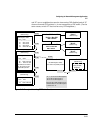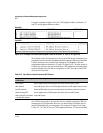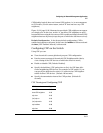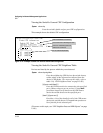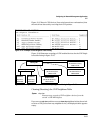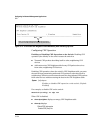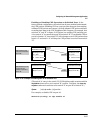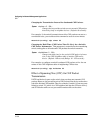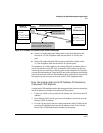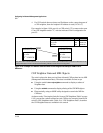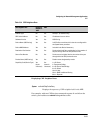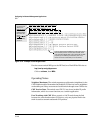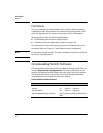
Configuring for Network Management Applications
CDP
Switch "A"
CDP Enabled
CDP Neighbor Table
Port | Data
------|------------------
A3 | Switch "B"data
C5 | Switch "B" data
Switch "B"
CDP Enabled
STP Root Device
CDP Neighbor Table
Port | Data
------|------------------
B1 | Switch "A" data
STP block on port C5 of switch "A" blocks
outbound transmission of CDP packets from
switch "A", but does not block inbound
packets to switch "A" from switch "B".
Port A3
Port C5
CDP Packets from Switch "A" to Switch "B"
Port B1
Port D8
CDP Packets from
Switch "B" to Switch "A"
Figure 13-19. Example of STP Effect on CDP Packet Transmission
■ Switch "A" sends outbound CDP packets on the forwarding link, and
the switch "B" CDP Neighbors table shows switch "A" on only one
port.
■ Switch "B" sends outbound CDP packets on both links, and the switch
"A" CDP Neighbors table shows switch "B" on both ports.
To summarize, in a CDP neighbor pair running STP with redundant links, if
one of the switches is the STP root, it transmits CDP packets out all ports
connecting the two switches, while the other switch transmits CDP packets
out only the unblocked port. Thus, the STP root switch will appear on multiple
ports in the non-root switch’s CDP Neighbors table, while the non-root switch
will appear on only one port in the root switch’s CDP Neighbors table.
How the Switch Selects the IP Address To Include in
Outbound CDP Packets
A switch with CDP enabled uses the following prioritized criteria to determine
which IP address to include in its outbound CDP packets:
1. If only one VLAN on the port has an IP address, the switch uses that IP
address.
2. If the Primary VLAN on the port has an IP address, the switch uses the
Primary VLAN IP address.
3. If 1 and 2 do not apply, then the switch determines which VLANs on the
port have IP addresses and uses the IP address of the VLAN with the
lowest VID (VLAN Identification number) in this group.
13-37



